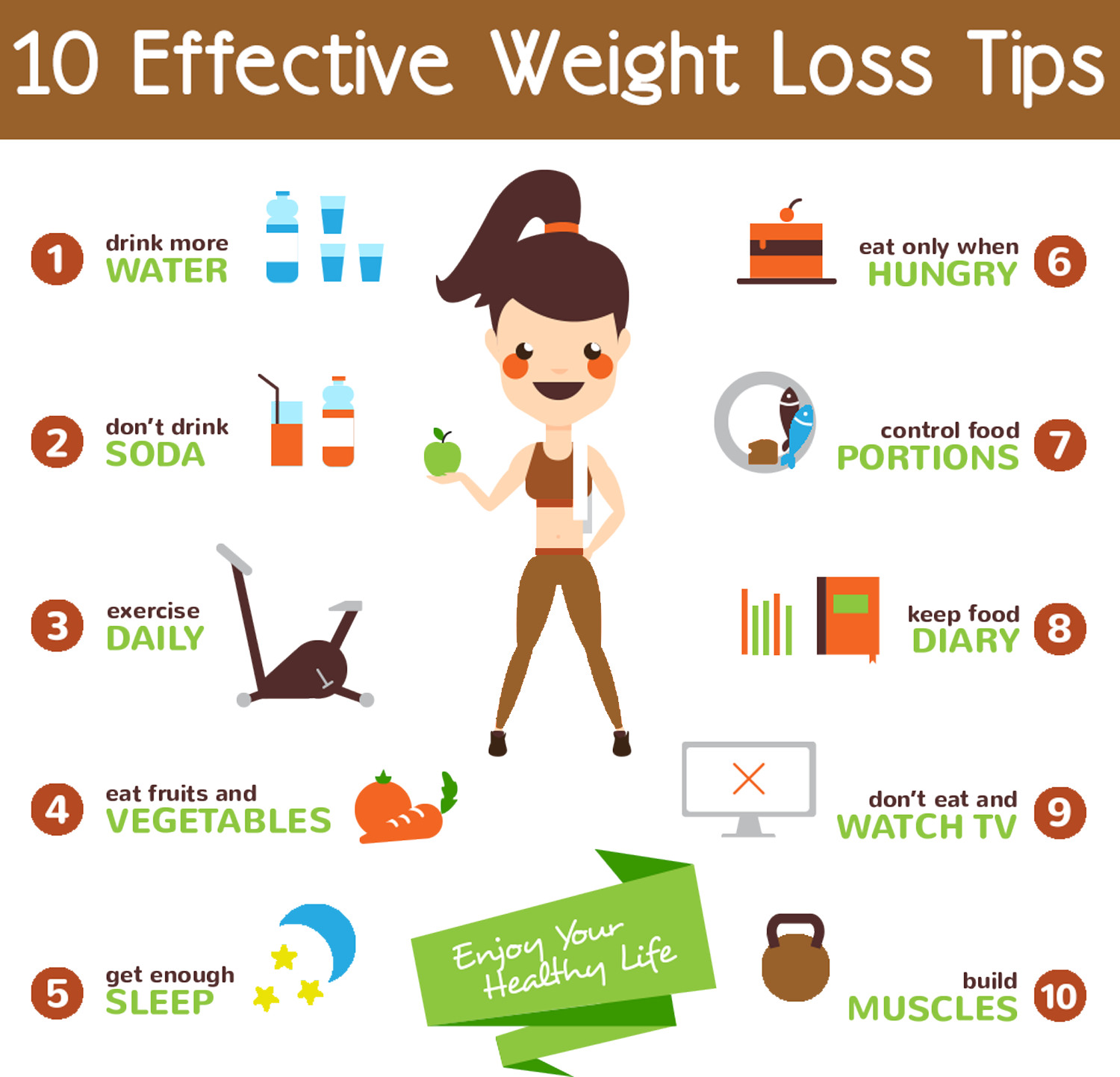Weight Loss Calculator

Use this calculator to estimate how much you will need to change your diet and exercise routine in order to reach your weight loss goals.
Usage instructions and background information appear below the calculator.
Usage Instructions
Required Data
Enter your height, weight, weight goal, age, activity level and gender and this calculator will estimate how long it will take to reach your health goals.
Optional Data
While they are not required, if you know your current body fat percent and your waist measurement you can enter those to slightly improve the accuracy of your calculation. Entering macro nutrient information is also optional for those who are just beginning their journey to better health.
How Much Does Exercise Matter?
If you are living a sedentary lifestyle you may be able to improve your mood and health while losing weight by picking up one of over 200 different exercises recommended in our workout calculator.
If you change how active you are and click on the [calculate] button the TDEE results will instantly change, showing you how much quicker you could lose weight if you maintained your current diet and exercised more.

Advanced Features
In addition to operating as a basic weight loss calculator, this calculator has a number of helpful advanced features highlighted below.
Set Your Goals
You can not only choose a goal weight, but also how quickly you would like to reach it through:
- aggressive weight loss
- faster weight loss
- weight loss
- maintain weight
- lean gain
- bulk
- custom shift in resting and active TDEE
Basal Metabolic Rate
Use any of the following formulas
- Mifflin-St. Jeor Formula
- Harris-Benedict Formula
- Katch-Macardale Formula
- Cunningham Formula
- Average
- Simple Multiplier
- Custom
Total Daily Energy Expenditure
- Calculate
- Simple Multiplier
- Custom
Save Results
You can toggle the [send results to my email] feature and enter your email address to get the results. You can also click on the [Get PDF Report] button to generate a PDF print out and see how well you followed your plan.
Macro Nutrients
As a general rule of thumb fats and protein take longer to break down and lead to a greater sense of satiety than simple carbohydrates. If you eat refined carbohydrates in bulk they cause your blood sugar to spike then crash, leaving you hungry again quickly.
Those looking to lose weight should generally try to limit how many calories they drink and limit the number of calories they consume from refined carbohydrates.
Power lifters looking to put on lean body mass may eat far more protein than most people. You can select
- How many meals you eat each day
- the ratio of carbohydrates versus fats
- grams of proteins per gram of fat or carb
The calculator will then return the grams needed per meal & day per macro nutrient, along with the associated number of calories. Click on the [nutrition] tab to view this information.
Viewing Your Results
After you have entered your information this calculator will return the following:
- BMR: Basal Metabolic Rate is how many calories you would burn daily if you were to remain motionless
- TDEE: Total Daily Energy Expenditure in calories
- LBM: lean body mass, which is your total body mass less any body fat
- FBM: fat body mass, or the weight of your body fat
- BMI: Body Mass Index is a measure of a person’s weight versus their height
- WTH: Waiste to Height
- MFM: Maximum Fat Metabolism is how many calories you can eat below your TDEE without losing lean body mass
- MRDC: Maximum Recommended Daily Calories
- Workout Calories: calories you burn on days you work out
- Rest Calories: calories you burn on days you do not work out
- Weeks to Reach Your Goal: how long it will take to reach your weight goal based on the
- Weight Class: ranging from severly underweight to obese, based on BMI
Waist to height requires measuring the size of your waist.
LBM, FBM, MFM and MRDC require entering in your body fat percent to calculate. You can estimate body fat percent using our other calculator if you do not know it.
A Practical Guide to Achieving Your Ideal Weight
For many people, just thinking about diet and exercise is a difficult feat. Sometimes, even when you want to lose weight, being busy and unmotivated gets in the way. And if you’re an absolute food enthusiast, setting food restrictions may seem counterproductive to your culinary goals.
However, there’s more to gain when you start eating right and doing workouts. You may not feel it much now, but unhealthy habits can take a serious toll on your body (especially your medical bills). As you age, you’ll realize you need to adopt a better lifestyle to keep yourself in good health.
In this article, we’ll detail the importance of reaching your ideal weight, as well as the many health consequences of being overweight. We’ll also talk about the right body fat percentage, as well as different methods of estimating the right weight for your age, gender, and height. Then, we’ll touch on how to better manage your diet, as well as exercises you can do to burn calories fast.
The Importance of Having the Right Weight

Reaching your ideal weight and maintaining it has great benefits. It impacts your physical and mental health in ways that elevate the quality of your life. The right weight can help you feel a lot better, helping raise your energy levels.
VeryWell Fit notes that losing excess weight helps you gain confidence, lifts energy levels, and improves your sleep.[1] Getting more active also releases hormones that stabilize your mood and make you feel happy. According to Healthline, exercise boosts endorphins, a pain-relieving chemical, and serotonin, a chemical that regulates mood, appetite, and learning.[2]
Moreover, the benefits of having the right weight is perhaps most apparent in preventing age-related diseases. According to the Centers for Disease Control and Prevention (CDC), even a modest weight loss of five to ten percent of your body weight significantly improves your cholesterol, blood sugar, and blood pressure levels.[3]
Here’s why you need to keep these biological markers within a healthy range. The right cholesterol level is needed to maintain essential body functions. High LDL cholesterol (low-density lipoproteins) leads to increased your risk of stroke and heart attack.[4] Keeping blood sugar levels at a safe range prevents diabetes and heart disease [5], while maintaining a healthy blood pressure prevents arterial damage which causes heart attack and stroke. Reducing hypertension is also important to prevent the following conditions[6]:
- Peripheral artery disease (PAD) – narrowing of arteries
- Loss of vision – due to damaged blood vessels in the eye
- Angina – a type of heart disease characterized by chest pain
- Sexual dysfunction – hypertension causes low libido
- Kidney disease – inability to filter blood caused by damaged arteries around the kidney
The Consequences of Heart Disease in the US
Lack of exercise and a proper diet affects your weight and heart health. Being overweight, obese, and diabetic certainly increases your risk of heart problems. And since it’s prevalent in the United States, it’s a must to encourage people to adapt healthier lifestyles.
- As of 2019, the CDC states that heart attack is the leading cause of death for most men and women in the US, with one person dying every 37 seconds from some form of heart disease.[7]
- In 2019, the American Heart Association estimates that about 647,000 Americans die from heart disease every year, which is around 1 in 4 deaths.[8]
- National Center for Health Statistics states that the US spent around $219 billion each year on heart disease patients between 2014 to 2015. This includes the cost of medicine, healthcare, and productivity loss caused by death.[9]
Apart from heart disease, excess weight has long been related to certain types of cancer. The International Agency for Research on Cancer (IARC) has identified 13 different cancers associated with being obese and overweight. These cancers include the following:[10]
- Liver
- Gallbladder
- Pancreas
- Kidney
- Uterus
- Ovaries
- Thyroid
- Meningioma
- Multiple myeloma
- Colon and rectum (colorectal)
- Adenocarcinoma of the esophagus
- Postmenopausal breast
- Gastric cardi (stomach)
Obesity and Overweight Statistics

When a person is obese, they exceed over 20% of their ideal weight. It’s more precisely defined by the National Institutes of Health (NIH) as a condition where an adult has a body mass index (BMI) of 30 and up.[11]
The BMI index is a general reference scale which prescribes the ideal weight for adults aged 20 and up. Normal weight is within a range of 18.5 – 24.9, while overweight individuals register between 25-29.9. See the BMI index below.
| BMI | Weight Status |
|---|---|
| Below 18.5 | Underweight |
| 18.5—24.9 | Normal |
| 25.0—29.9 | Overweight |
| 30.0 and Above | Obese |
For a more specific weight range, you can refer to this weight table from Healthline, which is based on height and BMI range.[12]
| Height | Normal (BMI 18.5–24.9) | Overweight (BMI 25–29.9) | Obese (BMI 30–35+) |
|---|---|---|---|
| 4’10” | 91–118 | 119–142 | 143–167 |
| 4’11” | 94–123 | 124–147 | 148–173 |
| 5’ | 97–127 | 128–152 | 153–179 |
| 5’1” | 100–131 | 132–157 | 158–185 |
| 5’2” | 104–135 | 136–163 | 164–191 |
| 5’3” | 107–140 | 141–168 | 169–197 |
| 5’4” | 110–144 | 145–173 | 174–204 |
| 5’5” | 114–149 | 150–179 | 180–210 |
| 5’6” | 118–154 | 155–185 | 186–216 |
| 5’7” | 121–158 | 159–190 | 191–223 |
| 5’8” | 125–163 | 164–196 | 197–230 |
| 5’9” | 128–168 | 169–202 | 203–236 |
| 5’10” | 132–173 | 174–208 | 209–243 |
| 5’11” | 136–178 | 179–214 | 215–250 |
| 6’ | 140–183 | 184–220 | 221–258 |
| 6’1” | 144–188 | 189–226 | 227–265 |
| 6’2” | 148–193 | 194–232 | 233–272 |
| 6’3” | 152–199 | 200–239 | 240–279 |
Please note: The table above may not provide the most accurate way to gauge your ideal weight. However, it’s still a helpful guide that will let you know if you’re weight is within a healthy range.
Over the years, obesity remains a growing problem in the U.S. Below are notable obesity statistics compiled by the CDC:[13]
- 40% of obese individuals in 2017-2018 were young adults aged 20 to 39 years old. 44% were middle aged from 40 to 59 years old, while 42.8% were aged 60 and up.
- In comparing 2017-2018 obesity statistics to data in 1999-2000, obesity prevalence increased from 4.7% to 9.2% That’s from 30.5% in 1999-2000, to 42.4% in 2017-2018.
- According to a study published in HealthAffairs.org, the annual healthcare cost of obesity in the US was around $147 billion in 2008. This means that medical bills for obese patients were $1,429 more costly than patients with normal weight.[14]
Furthermore, the World Health Organization (WHO) reports that the rate of obesity nearly tripled globally between 1975 and 2016. Aside from adults, children and adolescents are also affected by excess weight or obesity.

Below is a list of noteworthy statistics compiled by WHO:[15]
- In 2016, 13% of the global population were obese, which is 15% of women and 11% of men in the world.
- In 2016, more than 1.9 billion adults aged 18 and above were overweight, with 650 million of them obese.
- Prevalence of obesity in children ages 5 to 19 rose from 4% in 1975 to over 18% in 2016.
- In 2019, 38 million children aged 5 and below were overweight or obese.
- In 2019, almost half of obese or overweight children below 5 years old lived in Asia.
To help alleviate excess weight, doctors around the world encourage people to engage in regular exercise and adopt a healthy diet. But of course, for many struggling with health and weight problems, this is easier said than done. It can also be hard to track your progress if you don’t know what metrics to measure.
To help you keep tabs on your weight loss goal, use the weight loss calculator above this page.
How Much Body Fat Should a Person Have?

Your body fat percentage depends on different factors, such as your age, sex, and height. But among these factors, sex dictates how much fat is considered healthy for your body.
Your gender determines your body composition, which refers to how much fat your body has relative to its fat-free counterparts. Fat-free mass is composed of your muscles, organs, and bones. Men and women have distinct body composition, with men usually having higher muscle mass, and women having higher fat mass.[16]
Researchers at the American College of Medicine came up with body fat guidelines to help people know if they have healthy fat levels.[17] The table below takes into account age and body composition differences between men and women.
| Age | Men Healthy Body Fat % | Women Healthy Body Fat % |
|---|---|---|
| 20 – 29 | 7 –17% | 16 – 24% |
| 30 – 39 | 12 – 21% | 17 – 25% |
| 40 – 49 | 14 –23% | 19 –28% |
| 50 – 59 | 16 –24% | 22 –31% |
| 60+ | 17 –25% | 22 –33% |
Knowing your fat percentage can actually be more beneficial than just relying on the weighing scale. Thinness, contrary to what people might think, isn’t always a sign of health. It’s possible to be thin and unhealthy. Some people who may appear normal may actually have high fat percentage when they take a body fat percentage test.
What’s the Difference Between Body Fat Percentage and BMI?
BMI only factors in body mass when measuring weight. It does not account for body composition, such as the amount of muscles or fat-free mass. For example, under the BMI scale, a bodybuilder may appear to be obese. However, if he takes a body fat percentage test, we’ll see how low his fat mass is relative to lean muscles. In this respect, using a BMI scale may not always be the most accurate way to measure your fitness level.
To learn more about the ideal fat percentage in relation to BMI, read our guide and use our body fat percentage calculator.
Different Ways to Estimate Your Ideal Weight

You can determine your ideal weight and fitness level in several ways, mainly by checking your weight and height, taking body measurements, and undergoing a skinfold caliper test. To guide you in the right direction, below are different methods of estimating a healthy weight.
Body Mass Index (BMI)
As mentioned earlier, BMI is a scale that measures your weight relative to your height. This calculation results in your overall body mass. It’s one of the easiest methods you can use to know if you have a healthy weight range. According to the NIH, adults aged 20 and up with a BMI of 18.5-24.9 are considered normal.
Below is the standard equation for BMI:
BMI = kg / m^2
*where m2 stands for meters squared.
What if you have low BMI? Likewise, this also indicates possible health problems. Very low BMI may be a symptom of bone loss, a compromised immune system, iron deficiency, or other conditions.[18] Make sure to see your doctor if you have low BMI.
BMI Limitations
Again, BMI is not the most precise way to get your ideal weight. This scale disregards other factors such as age, fat distribution, muscle mass, as well as waist or hip proportions. For instance, older individuals usually have more fat than younger adults. Without factoring age, BMI may classify a senior as overweight. In another example, Women tend to have more fat mass than men based on BMI. Without accounting for body composition, some women may identify as overweight and unfit under BMI standards.
In this respect, though BMI provides general guidelines for a healthy weight, it’s not the best way to know if you may need to lose excess pounds.
Waist-to-Hip Ratio
This method uses a tape measure around your waist, buttocks, and hips. It measures the wideness of your hips relative to your waist circumference. While you can try to measure yourself, it’s better to get help from an experienced professional to avoid errors. Things like how you pull the tape, the position of your hands, and the thickness of your clothing can affect the measurement. In short, there’s plenty of room for error. For accuracy, have yourself measured twice.
Waist-to-hip ratio (WHR) is calculated by getting your hip measurement (HM) and dividing it by your waist circumference (WC). See the formula below.
WHR = WC/HM
Factoring in body composition, expect waist-to-hip ratio to differ between men and women. The WHO states that a healthy waist-to-hip ratio is 0.85 or less for women, and 0.9 or less for men. Waist-to-hip ratio that is more than 1.0 may indicate higher chances of getting heart problems, hypertension, and other weight-related ailments.
WHR Limitations
This measurement method is not effective when used by people who are less than five feet tall. It is also not a recommended basis for weight and fitness if your BMI score is 35 and up.
Body Fat Percentage

Determining your ideal weight with a body fat percentage (BFP) test is one the best ways to know if you have a healthy weight. According to research in the American Journal of Clinical Nutrition, a BFP test may be more accurate in determining the prospect of weight associated illness.[20]
A specific BFP scale that accounts for body type is recommended by the American Council of Exercise (ACE).[21] It suggests BFP scores for athletes, fit individuals, people with average physique, and those who are overweight and obese. See the table below.
| Activity Level | Male | Female |
|---|---|---|
| Athletes | 6 – 13% | 14 – 20% |
| Fit non-athletes | 14 – 17% | 21 – 24% |
| Acceptable | 18 – 25% | 25 – 31% |
| Overweight | 26 – 37% | 32 – 41% |
| Obesity | 38% or more | 42% or more |
The following measurements must be taken to calculate BFP:
- Weight
- Height
- Wrist and forearm measurements
- Waist and hip circumference
Aside from a measuring tape, you may also use skinfold calipers to perform a BFP test. If you’re not familiar with this tool, be sure to get help from an experienced individual to prevent measurment error. Try to take 2 measurements to make sure your figures are correct. A more accurate way to get this test is through a hydrostatic weighing method, which submerges your body under water. But for a more accessible way, you can stick to tape and calipers.
To calculate BFP, you must take your total weight (TW) and divide it by the weight of your body fat (WBD). See the equation below:
BFP = WBD/TW
BFP Limitations
Taking several measurements with tape and calipers means theirs a lot of room for error. It takes skill and precision before you can take good measurements. Get help from an experienced professional for more accurate figures.
Now that you have a better idea how to estimate your ideal weight, it’s time to get around to managing you diet and physical fitness. Below are several ways to improve your eating habits, as well as basic exercises you can do to reach your weight loss goal.
Eat Your Way to a Healthy Weight

Adjusting to a new diet doesn’t sound exciting. But if you’re passionate about food and really interested about preparing good meals, it’s possible to eat nutritious meals that are still satisfying and delicious. The idea isn’t to eat less or starve yourself. It’s more important to replace unhealthy food choices with foods rich in vitamins instead of calories. On that note, here are several helpful tips to help you eat your way to a healthy weight.
Eat Lots of Protein
Increasing your protein is a must when you’re gunning for your ideal weight. High-protein foods help keep your body from losing muscle mass. It even increases your metabolism and helps stave off hunger pangs.[21] Protein also encourages muscle gain and fat reduction. Examples of protein-rich foods include eggs, white meat poultry, lean red meat, salmon, nuts, and soy. Now, it takes a while to get used to choosing healthier foods. But with many high-protein food options out there, you’re likely to find something tasty and satisfying.
Add More Fiber in Your Diet
Aside from more protein, it’s also wise to eat more high-fiber foods. Fiber helps promote weight loss by regulating bowel movement and preventing constipation. The Mayo Clinic also states that fiber helps you feel full longer, keeping you from snacking in between meals.[22] Fiber-rich foods include fruits like apples, berries, and oranges, as well as green veggies like spinach and kale. These foods allows you to eat more without accumulating extra calories.
Lay Off the Carbs
Cutting down on carbs can help you achieve long-term weight loss, according to Harvad T.H. Chan School of Public Health.[23] Sweets and high-carbohydrate foods make stomach fat worse, so it’s best to ditch the junk food, soda, and processed meals. Stick to fresh vegetables and lean meat. You can get carbs from healthier sources such as fruits, green leafy vegetables, and nuts like almonds. Lessening your calorie intake doesn’t mean totally depriving yourself. Even when you’ve reached a lower body fat level, you still need a healthy level of carbs to keep your metabolism from crashing.
Add Probiotic Foods to Your Meals
Probiotics are good bacteria that promote healthy digestion and enhanced immune function. Its helps you avoid diarrhea, constipation and stomach bloating. A strain of probiotic bacteria called Lactobacillus amylovorus can reduce body fat by 3 to 4%.[24] You can get probiotics from foods like organic yogurt, kombucha, kimchi, and pickles.
Cook Your Own Meal
As a food enthusiast, challenge yourself by cooking healthier meals for yourself. Take advantage of your knowledge of different ingredients and cuisines. Experiment with food and come up with tasty yet healthy variations of your classic favorites. It allows you to control your calorie intake as well as save money from dining out.
Boosting Weight Loss with Effective Workouts

Living a sedentary lifestyle will really keep you from burning calories. So even if you’re busy, make sure to engage in some kind of physical activity every day. Schedule your workouts and commit to them so you have a regular routine. Doing two main exercises, specifically cardio and strength training, can help you achieve your weight loss goal.
Cardiovascular Workouts
Cardio exercises like brisk walking, running, and cycling are great ways to burn calories and improve your health. It’s also one of the most effective forms of exercise for reducing belly fat. Busy at work? Here’s a tip. Every now and then, try taking the stairs in your office building. Take 15-20 minute walks after a long day of work. Even a short time can help you lose calories.
Need low-impact cardio to avoid joint pain? Here are several exercises you can try:
- Swimming
- Stationary biking
- Power Yoga
- Elliptical training
- Tai chi exercises
Start Lifting Weights
Aside from cardio, mix up your workout routine with weights. Strength training is important for maintaining and gaining muscle. A combination of cardiovascular and strength training exercises can help decrease body fat. But before you start weight lifting, make sure to get help from a professional trainer. It’s better to know the correct form to prevent injuries.
Looking for strength training workouts for beginners? Here’s a list of exercises you should try:
- Shoulder presses with dumbbells
- Bent-over rows with dumbbells
- Chest presses
- Goblet squats
- Glute bridges
Managing Your Overall Health
Achieving your ideal weight is often not a straight line. It also takes a lot of patience and commitment to stick to your routine.
Keep these basic diet and workout advice in mind to help you power through your weight loss. It’s also important to know different ways of tracking your progress to gauge your health and fitness level.
While weight loss may not be easy, it helps to have the right tools and surround yourself with supportive friends to get you through your journey.
To keep track of how much calories you burn per workout,
use our workout calorie calculator.
Sources:
- https://www.verywellfit.com/benefits-of-losing-weight-3495571
- https://www.healthline.com/health/happy-hormone
- https://www.cdc.gov/healthyweight/losing_weight/index.html
- https://www.healthline.com/health/high-cholesterol/levels-by-age
- https://www.medicalnewstoday.com/articles/249413
- https://www.heart.org/en/health-topics/high-blood-pressure/health-threats-from-high-blood-pressure
- https://www.cdc.gov/heartdisease/facts.htm
- https://pubmed.ncbi.nlm.nih.gov/30700139/
- https://www.cdc.gov/nchs/data/databriefs/db103.pdf
- https://www.iarc.fr/wp-content/uploads/2018/07/pr247_E.pdf
- https://www.nih.gov/news-events/news-releases/nih-study-identifies-ideal-body-mass-index
- To know how much you should weigh, you can refer to this Healthline weight chart which factors in your height and BMI range.
- https://www.healthline.com/health/how-much-should-i-weigh#bmi
- https://www.cdc.gov/obesity/data/adult.html
- https://www.healthaffairs.org/doi/10.1377/hlthaff.28.5.w822
- https://www.who.int/news-room/fact-sheets/detail/obesity-and-overweight
- https://www.ncbi.nlm.nih.gov/pubmed/11706283
- https://www.healthline.com/health/how-to-measure-body-fat
- https://www.healthline.com/health/body-mass-index
- https://apps.who.int/iris/bitstream/handle/10665/44583/9789241501491_eng.pdf
- https://www.ncbi.nlm.nih.gov/pubmed/10966886
- https://www.webmd.com/diet/ss/slideshow-boost-your-metabolism
- https://www.mayoclinic.org/healthy-lifestyle/weight-loss/in-depth/weight-loss/art-20044318
- https://www.hsph.harvard.edu/news/hsph-in-the-news/carbs-calories-weight-loss/
- http://www.sciencedirect.com/science/article/pii/S1756464612001399
